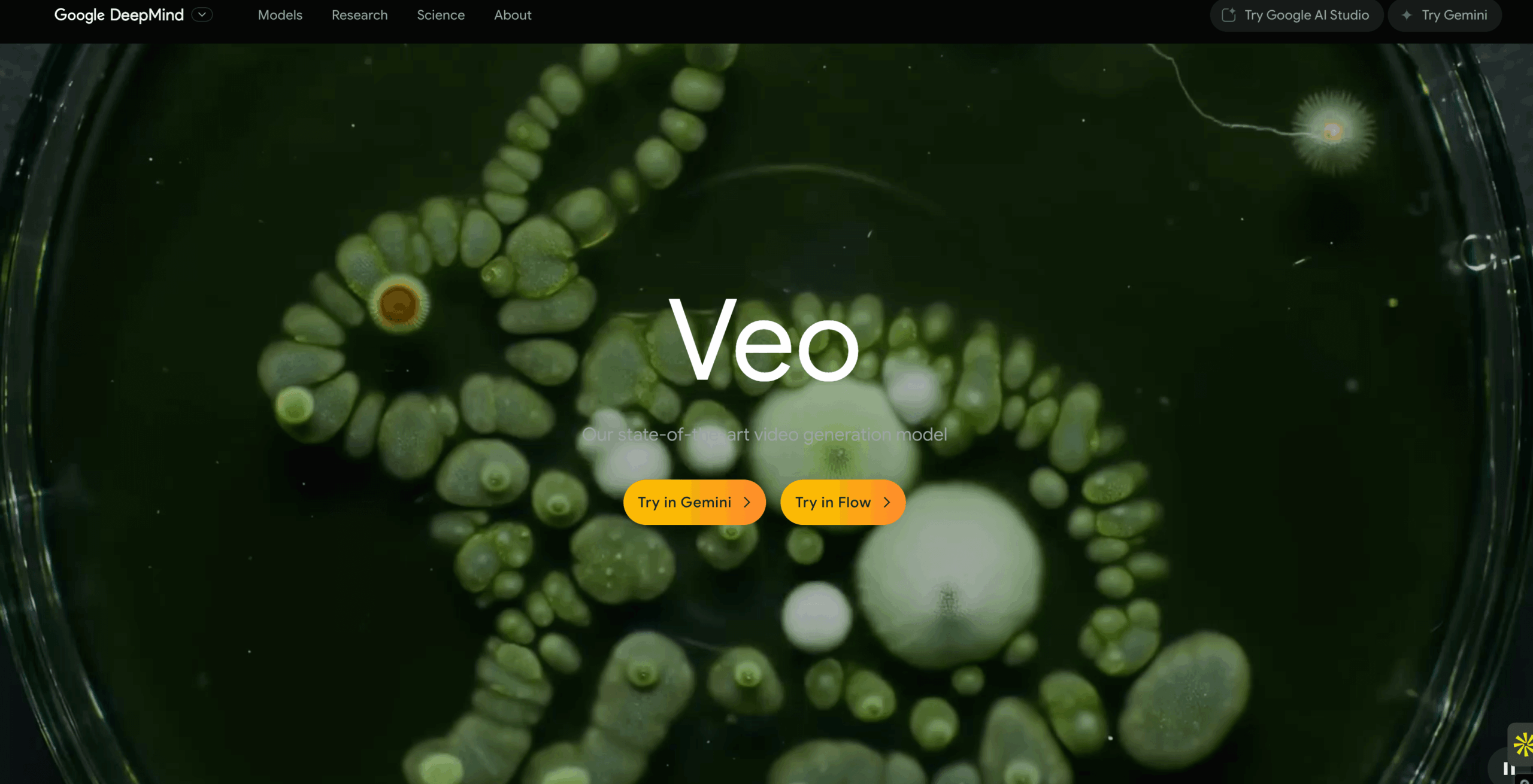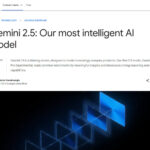Google DeepMind presents Veo 3 – the first AI video generator with integrated audio synthesis that redefines the boundaries between synthetic and real content.
The release of Veo 3 in May 2025 marks a major turning point in AI-powered video production. The new model from Google DeepMind not only produces high-resolution videos in up to 4K quality, but also automatically synchronizes matching audio effects and dialogues. This technical innovation positions Veo 3 as a direct competitor to OpenAI’s Sora, but surpasses its capabilities through native audio integration.
Development took three years and involved training on 20 million hours of video material from licensed sources. The underlying Transformer model processes visual and audio data in a common space, achieving a lip-sync accuracy of less than 120 milliseconds. Production studios such as Laika reduced their character design cycles from twelve weeks to three days by using prompt-based variant creation.
Technical architecture and features
Veo 3’s hierarchical diffusion model works on multiple temporal levels. A 12-billion-parameter transformer generates keyframes at 2-second intervals, while a 28-billion-parameter U-Net interpolates the intermediate frames. The separate audio synthesis engine with 9 billion parameters analyzes the rendered frames and produces synchronized soundtracks using video-to-audio technology.
Director Donald Glover reduced his storyboard time by 78 percent when visualizing a chase scene. The Flow user interface enables precise cinematographic controls through natural voice commands such as “helicopter chase shot of a speeding motorcycle”. A 512-dimensional latent space ensures consistent character properties across multiple scenes.
Rating and industry comparison
Independent evaluations using the VBench 2.0 suite show Veo 3’s superiority in critical metrics. Temporal Consistency scores 8.9 out of 10 compared to the industry average of 6.2, Anatomy Accuracy scores 9.1, while Audio-Visual Synchronization sets a new benchmark with a score of 8.7. These performance values are based on 50,000 video samples and demonstrate the technical maturity of the system.
Render times average 4.2 minutes per minute of footage on Google’s Cloud TPU v5 clusters. However, current hardware requirements limit accessibility – 4K renders cost $18.75 per minute on Google Cloud, which can be prohibitive for independent creatives. The energy intensity of the training is equivalent to the annual consumption of 2,100 US households.
Ethical challenges and safeguards
Google DeepMind implemented several security mechanisms to combat deepfake risks. SynthID watermarking technology achieves 99.3 percent detection accuracy in controlled tests and makes synthetic content identifiable through specialized scanners. Each generated video contains creation metadata that complies with C2PA standards and enables end-to-end tracking.
Despite these precautions, the Animation Guild predicts the displacement of 104,000 US media jobs by 2026, particularly in entry-level storyboard and visual effects positions. The Writers Guild has already secured 2.5 percent royalties for AI-generated content that uses members’ intellectual property. These developments highlight the need for balanced regulatory approaches.
Executive Summary
- Veo 3 generates high-resolution video with synchronized audio and outperforms competing models in temporal consistency and anatomy accuracy
- Hierarchical diffusion model utilizes 49 billion parameters and was trained on 20 million hours of video footage
- Production studios drastically reduced development times – Laika shortened character design cycles from twelve weeks to three days
- SynthID watermarks and C2PA metadata to prevent deepfake abuse, achieve 99.3 percent detection accuracy
- The Animation Guild warns of 104,000 jobs at risk by 2026, mainly in entry-level positions
- Render costs of $18.75 per minute for 4K video limit access for independent creatives
- Flow interface enables cinematographic controls through natural voice commands and consistent character generation
Source: Google DeepMind







